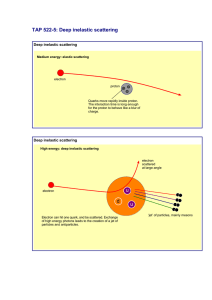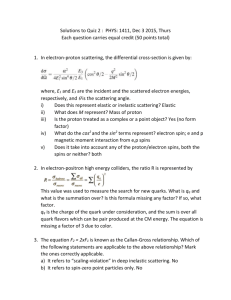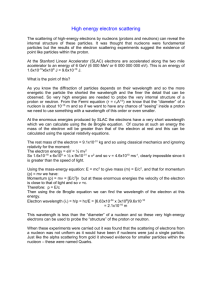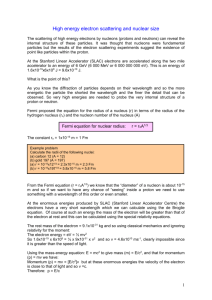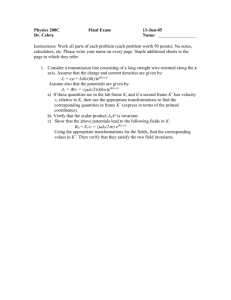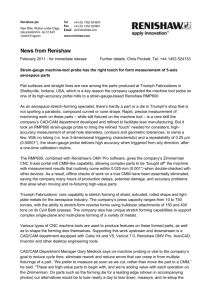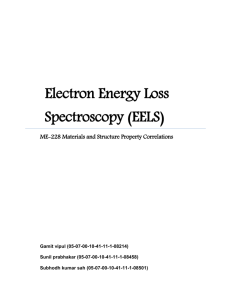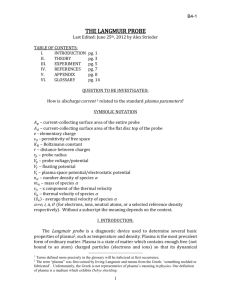TAP539-0: Deep inelastic scattering
advertisement
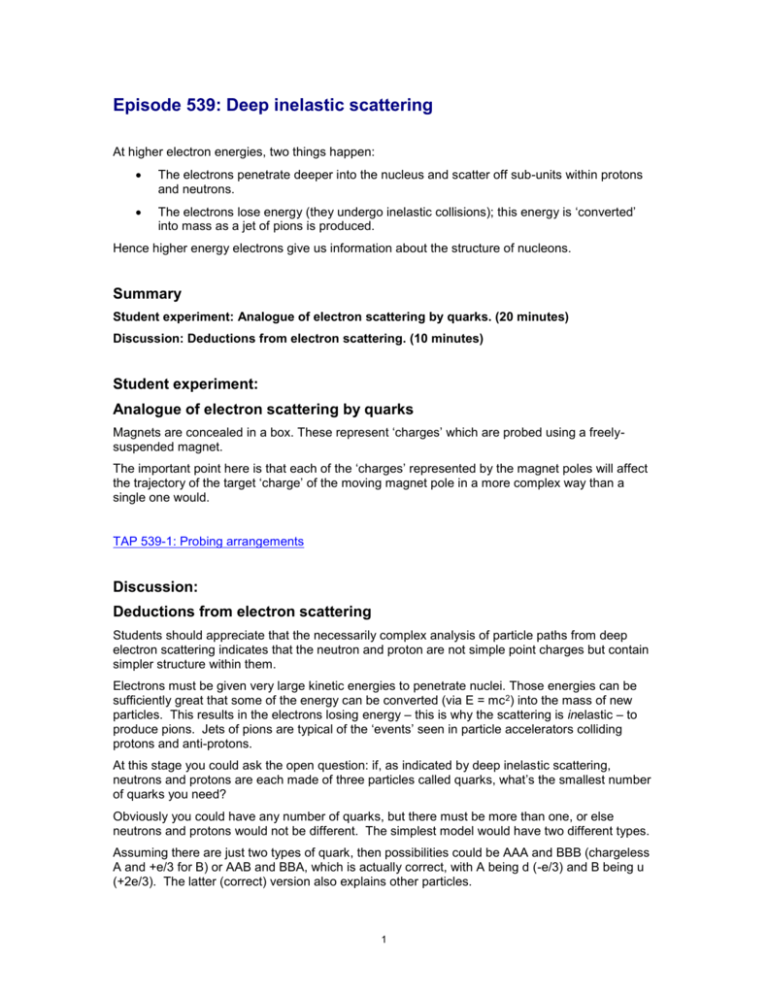
Episode 539: Deep inelastic scattering At higher electron energies, two things happen: The electrons penetrate deeper into the nucleus and scatter off sub-units within protons and neutrons. The electrons lose energy (they undergo inelastic collisions); this energy is ‘converted’ into mass as a jet of pions is produced. Hence higher energy electrons give us information about the structure of nucleons. Summary Student experiment: Analogue of electron scattering by quarks. (20 minutes) Discussion: Deductions from electron scattering. (10 minutes) Student experiment: Analogue of electron scattering by quarks Magnets are concealed in a box. These represent ‘charges’ which are probed using a freelysuspended magnet. The important point here is that each of the ‘charges’ represented by the magnet poles will affect the trajectory of the target ‘charge’ of the moving magnet pole in a more complex way than a single one would. TAP 539-1: Probing arrangements Discussion: Deductions from electron scattering Students should appreciate that the necessarily complex analysis of particle paths from deep electron scattering indicates that the neutron and proton are not simple point charges but contain simpler structure within them. Electrons must be given very large kinetic energies to penetrate nuclei. Those energies can be sufficiently great that some of the energy can be converted (via E = mc 2) into the mass of new particles. This results in the electrons losing energy – this is why the scattering is inelastic – to produce pions. Jets of pions are typical of the ‘events’ seen in particle accelerators colliding protons and anti-protons. At this stage you could ask the open question: if, as indicated by deep inelastic scattering, neutrons and protons are each made of three particles called quarks, what’s the smallest number of quarks you need? Obviously you could have any number of quarks, but there must be more than one, or else neutrons and protons would not be different. The simplest model would have two different types. Assuming there are just two types of quark, then possibilities could be AAA and BBB (chargeless A and +e/3 for B) or AAB and BBA, which is actually correct, with A being d (-e/3) and B being u (+2e/3). The latter (correct) version also explains other particles. 1 TAP 539-1: Probing arrangements Trajectories show structure Probing unknown regions of space by tracking probes can show what lies in the volume of space. If a charged probe is used then expect to be able to tell where the charged particles are in that space (or perhaps were – the nature of the interactions will depend on the mass of the target charges, as well as the probes). A further potential difficulty is that the charges within the probed volume may not themselves be stationary, even before the probe arrives. And often you can usually only see where the probes enter and leave the volume, not track them through the volume. However, there are usually few alternatives available. Highly inferential knowledge gained in precisely this way forms a major part of what is known about the subatomic world. Here the north-seeking poles of magnets are used, to model repulsive interactions. You will need: target box three bar magnets cylindrical magnet mounted on 1 m of dowel retort stand, boss and clamp A model of high-energy collisions Set up the probe to swing freely. Set up a number of magnets in the target volume of space: height of magnets 15 cm 15 cm Then challenge a partner to discern what is in that space – using the probe! Keep it to fairly simple distributions. Suspend the probe so that the centre of the swing is over the centre of the box. Place the aiming card over the centre of the box. Then probe. Make a good model – don’t cheat! 2 In probing you might try: 1. Altering the initial kinetic energy of the probe. 2. Altering the aiming error of the probe. Suggest reasons for your choice of what is under the box. Change roles and try again. You have 1. Used a model of high-energy probing of a volume of space. 2. Seen the effect of probe energy on the ability to resolve what is in the space. 3. Found some of the difficulties in interpreting trajectories to infer the existence of particles. 3 Practical advice The apparatus is simple enough, and variations may suit local conditions. The box will need to be of a suitable inside height to allow the magnets to stand inside the box, just reaching to the top. External reference This activity is taken from Advancing Physics chapter 17, 70E 4
